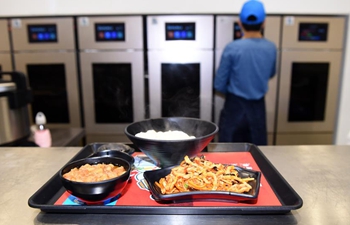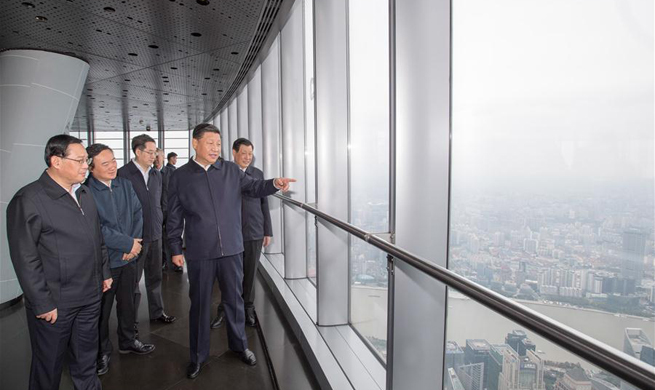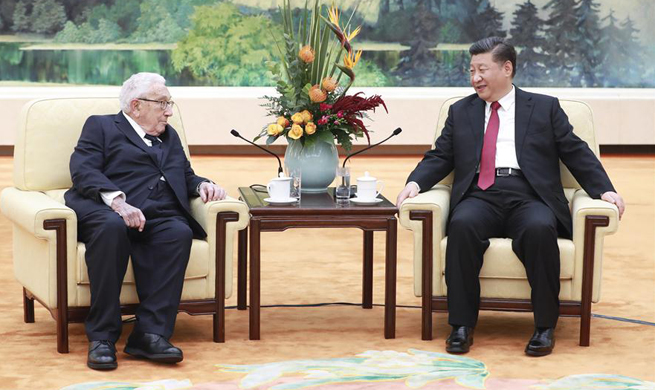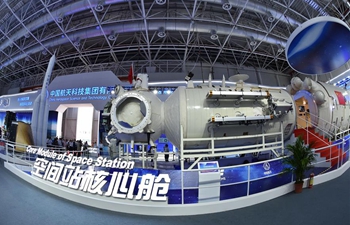WASHINGTON, Nov. 8 (Xinhua) -- American and Chinese researchers developed a heat-rejecting film that could reflect 70 percent of the sun's incoming heat in a building's windows.
The study published on Thursday in the journal Joule described the material that remained highly transparent below 32 degrees Celsius and could act as an "autonomous system" to reject heat above that temperature.
If every exterior-facing window in a building were covered in this film, the building's air conditioning and energy costs could drop by 10 percent, according to researchers from Massachusetts Institute of Technology (MIT) and the University of Hong Kong.
The film is embedded with tiny micro-particles, made from a type of phase-changing material that shrinks when exposed to high temperature, turning into a more translucent or frosted look.
It can cool a building while still letting in a good amount of light, offering an affordable and energy-efficient alternative to existing smart window technologies, according to Nicholas Fang, a professor of mechanical engineering at MIT.
The researchers created a 12-by-12 inch film-coated window. The window turned frosty in response to heat from a solar simulator.
They measured the solar irradiance transmitted through the other side of the window, and found the film was able to reject 70 percent of the heat produced by the lamp.
They also lined a small chamber with the film and measured the temperature inside. Without the film, the inner temperature heated to about 39 degrees Celsius, while with the film the inner chamber stayed at a more tolerable 34 degrees.
"That's a big difference," said Fang. "You could make a big distinction in comfort."

















